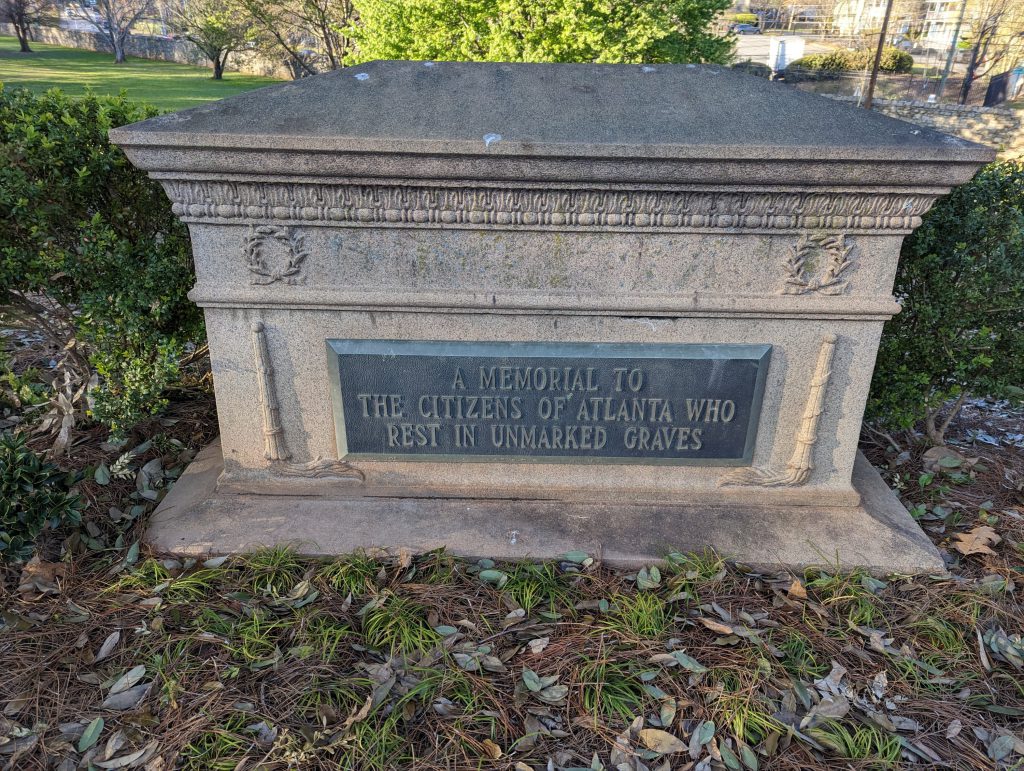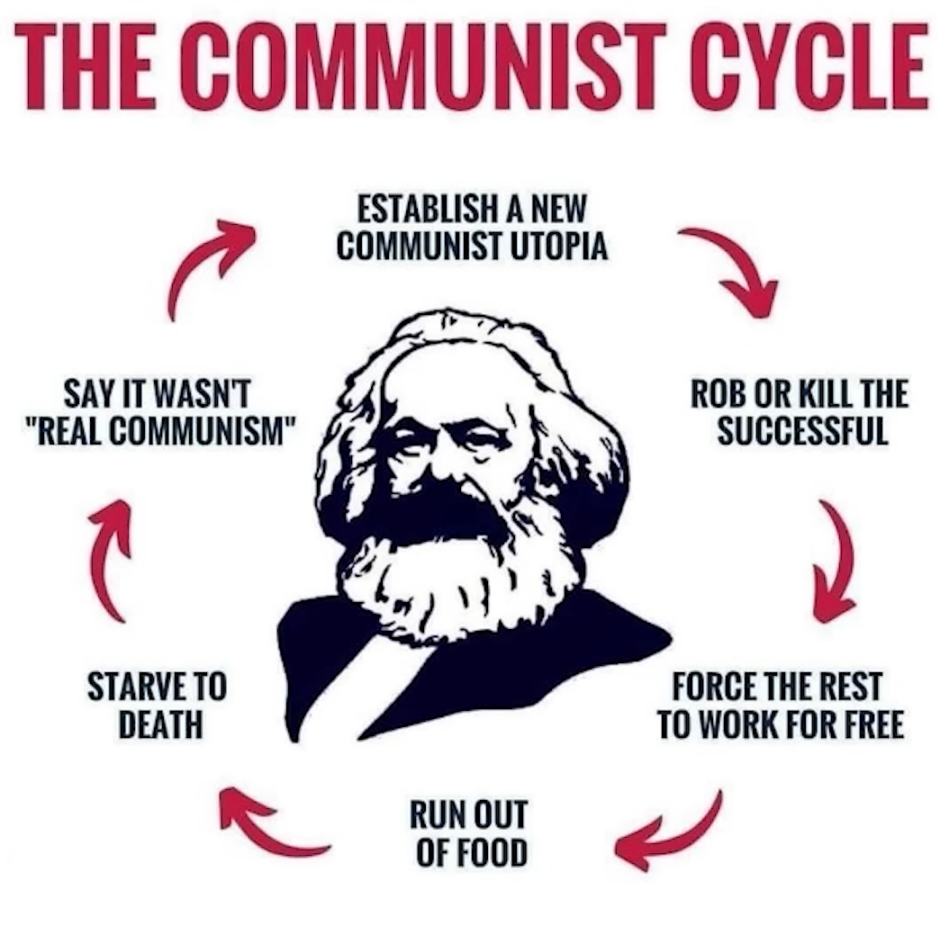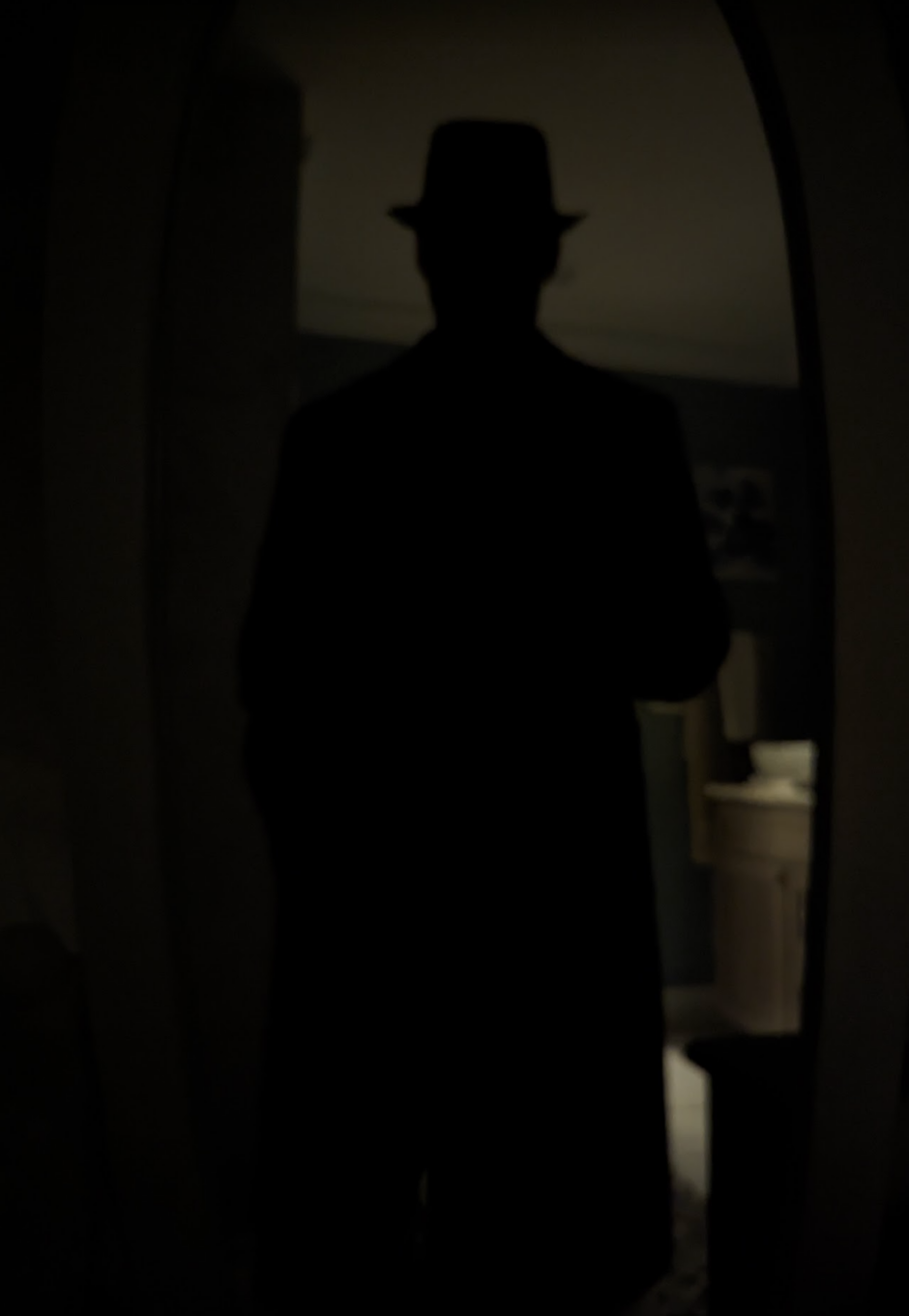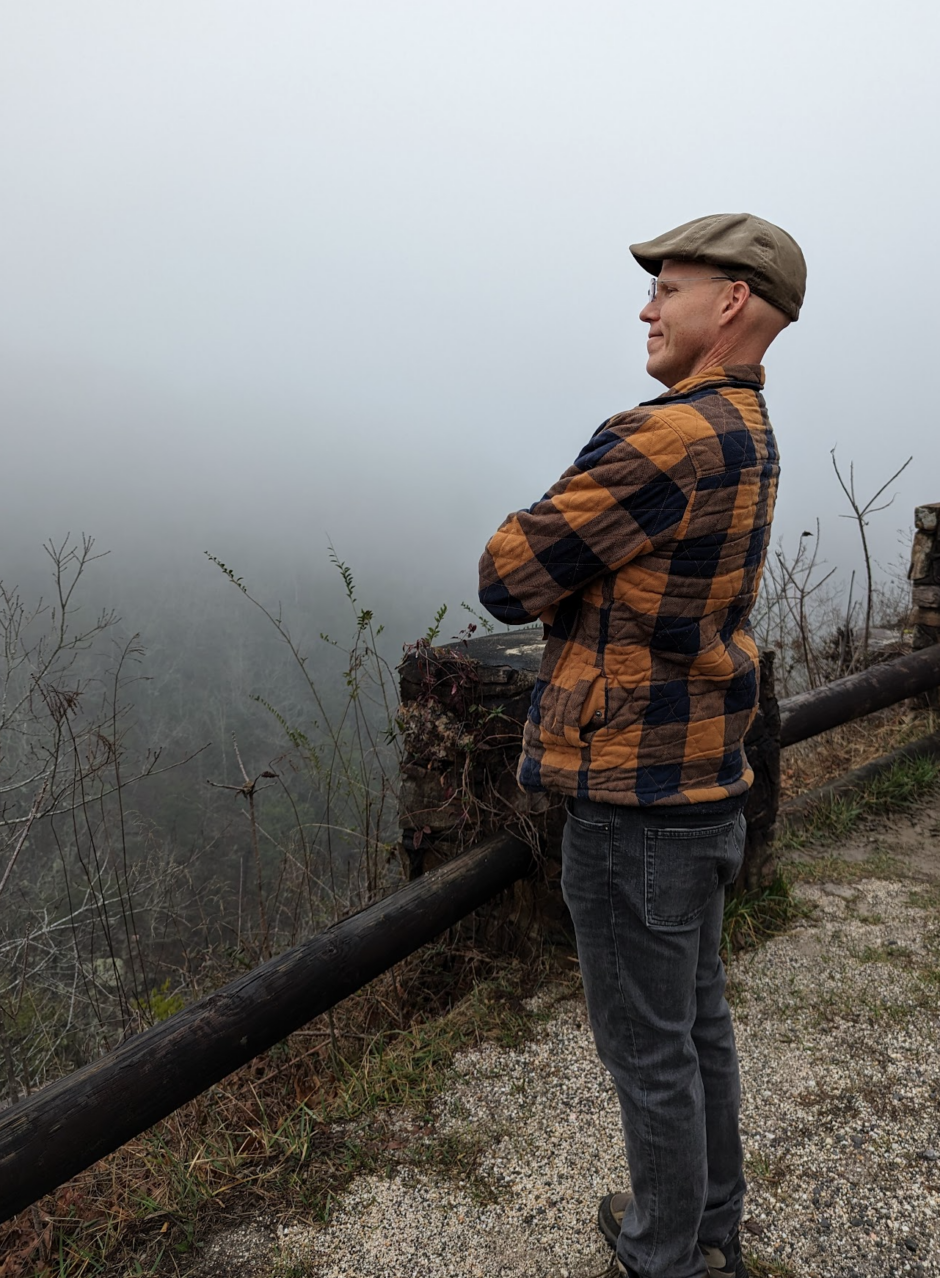Uncategorized
-
Graphic of the day
-
Lifestyle update -carrots
Starting on March 20, 2024 I started eating carrots and am stopping drinking protein shakes – we’ll see if my general health trends improve.
Just a record of change.
-
My Office Worker of the Old West Vibe
-
Staring into the fog
-
Shadow Two
-
Recent photos of my shadow and me
from my new “look” which seems to be office worker of the Old West
-
Before and after
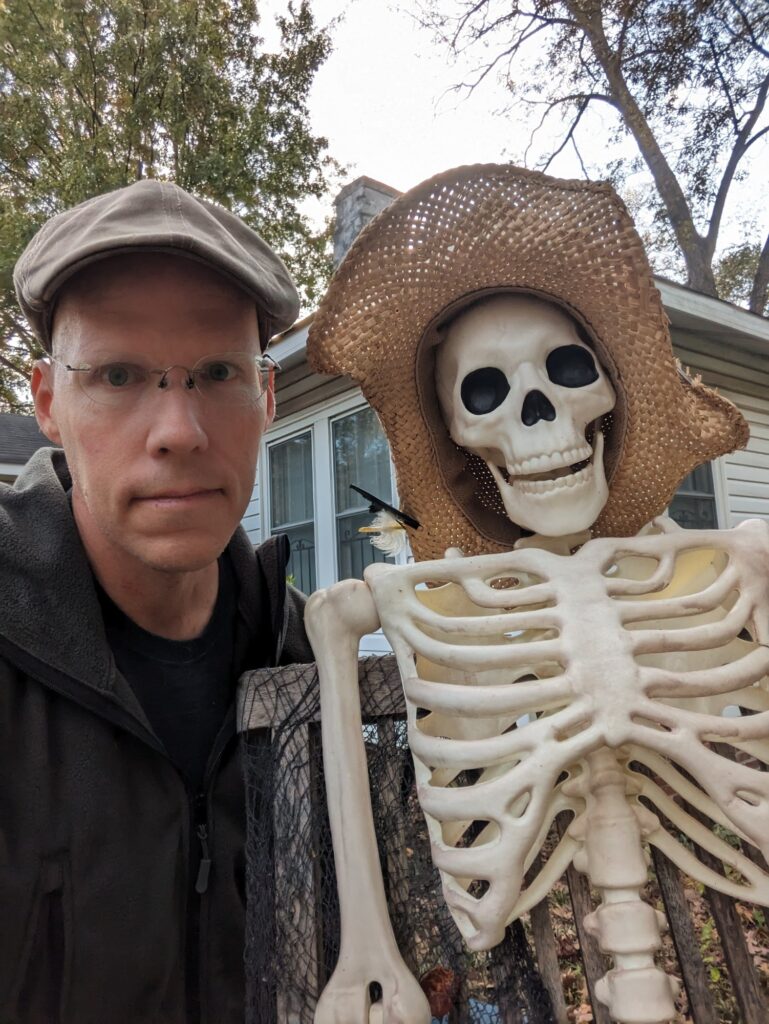
Here -
On the Marble Cliffs by Ernst Junger
This was a finalist in the Astral Codex Ten book review context. I’m a huge fan of Storm of Steel and have been meaning to read the rest of Junger’s work. Happily I was able to find the Hood translation on Archive.org. The ACX review covers all of the details of the book better than I could – I agree 100% with all of his conclusions.
What It’s AboutTwo retired soldiers meet evil and decay in the form of the Chief Ranger – someone who can weaponize decay and evil.
How I Discovered It
The Astral Codex Ten book review context
Thoughts
It’s awesome and delivered like no other book I’ve ever read
What I Liked About It
The style, the delivery, the weird sense that nothing is happening, it’s just noticed by the narrator – similar to Star Maker in that sense – a point of view seeing the world rather than an actor in the world
What I Didn’t Like About It
I wish there some were some sort of discussion group where I can pick up what I missed. I would like more!
Who Would Like It?
Anyone who likes Junger
Related Books
Storm of Steel
Odd John
Star MakerNotes and Quotes
Then there were brilliant duels which the weapon of laughter decided, and in which met fencers who shone by their fight, untrammelled command of thought— mastery such as comes only from a long life of leisure.
_________________________________________________
But otherwise we lived, day in, day out, in our Rue-Garden 1 Hermitage in great seclusion. The Hermitage stood at the edge of the Marble Cliffs in the middle of one of those rock islands which here and there one sees breaking through the grape land. Its garden had been won from the rock in narrow terraces, and on the sides of its drystone walls wild herbs had settled such as thrive in the fertile vine-growing country.
_________________________________________________
There he beat the rim with a pearwood spoon, and the gleaming red snakes came gliding from the clefts of the Marble Cliffs. As if in a waking dream I heard him laugh as he stood amongst them on the trodden clay of the courtyard before the kitchen. Half erect, the creatures played around him and swayed their heavy triangular heads to and fro above his with rapid beat. I stood on the balcony and did not dare to call to my boy, as if he were a sleep-walker wandering on the heights.
_________________________________________________
Then the herdsmen will not let their cattle go to pasture near the Marble Cliffs, for a bite that finds its mark fells even the strongest steer with lightning speed.
NOTE: The cliffs are infested with venomous snakes?
_________________________________________________
Then we would see little Erio frolicking with her, while, like a kitten, she rubbed her pointed head against his dress.
NOTE: They intentionally feed snakes and let tbeir kid play with venomous snakes…
_________________________________________________
We amused ourselves with the curiosities of erudition and with quotations chosen for rarity or a touch of the absurd. Then ON THE MARBLE CLIFFS 17 we were well served by the legion of leather- or parchmentbound slaves.
NOTE: Books?
_________________________________________________
So a work grew, and in its very growing we rejoiced.
NOTE: To Junger everything is some sort of natural phenomenon
_________________________________________________
When we are happy our senses are contented with however little this world cares to offer. I had long done reverence to the kingdom of plants, and during years of travel had tracked down its wonders.
_________________________________________________
It was seldom that I entered this part of the Hermitage, for the presence of Lampusa awoke in me a feeling of constraint that I preferred to avoid.
_________________________________________________
Brother Otho, too, I would often see standing with the old woman by the fire. To him I owed the happiness that had been my lot with Erio, the love-child of Silvia, Lampusa’s daughter.
NOTE: Are they brothers or monks?
_________________________________________________
But I was more nettled by the laughter of Lampusa, who scanned me with a glance in which I saw the shamelessness of a bawd. And yet it was not long before I frequented her hut.
_________________________________________________
It was a basic principle with him to treat each single person with whom we came into contact as a rare find discovered on one’s travels. Then, too, his favourite name for men was “ the optimates,” to signify that everyone must be numbered among the true-born nobility of this world, and that from any one of them we may receive supreme gifts. To him they were vessels stored with wonders, and to figures of such nobility he accorded the rights of princes. And in truth I saw how each one who approached him unfolded like a plant awaking from its winter sleep; it was not that they became better, but that they became more themselves.
_________________________________________________
Strange, too, was the fact that the vipers, when called by Lampusa, surrounded the quaich in mixed and glowing braids, whereas with Erio they formed a rayed wheel. This Brother Otho was the first to notice.
_________________________________________________
Like all things of this earth, plants too attempt to speak to us, but one requires sharp senses to understand their speech.
NOTE: Junger lives an entirely internal life. his inner dialog must have been awesome and massive
_________________________________________________
So even after the first few weeks it seemed to me as if external things were being transformed; and the transformation first manifested itself to me as an inability to express myself in words.
NOTE: Overwhelmed with just noticing things
_________________________________________________
Often when I had fathomed the mystery of a word I would hasten down to him, pen in hand, and often he mounted to the herbarium on the same errand.
NOTE: Labeling he is a protorationalist
_________________________________________________
Thus we described objects and their metamorphoses, from the grain of sand to the cliff of marble, and from the fleeting second to the changing year. In the evening we would collect our scraps, and when we had read them would burn them on the hearth.
NOTE: Ephemeral link nature regarding insight
_________________________________________________
The word is both king and magician. Our high example we found in Linnaeus, who went out into the unruly world of plants and animals with the word as his sceptre of state. And more wonderful than any swordwon empire, his power extends over the flowering fields and nameless insect hosts.
_________________________________________________
Thus it came about that our work was not abandoned when the Chief Ranger seized power in our territory and terror spread throughout the land.
NOTE: Finally the chief ranger appears
_________________________________________________
He was one of those figures whom the Mauretanians respect as great lords and yet find somewhat ridiculous—rather as an old colonel of the mounted yeomanry is received in the regiment on his occasional visits from his estates.
_________________________________________________
At this period I was scarcely disturbed by the inflexibility of his nature, for all Mauretanians acquire with time something of the nature of an automaton.
_________________________________________________
Later I was to hear Brother Otho say of our Mauretanian period that mistakes become errors only when persisted in. It was a saying that gained in truth for me when I thought back to our position when this Order attracted us. There
_________________________________________________
periods of decline when the pattern fades to which our inmost life must conform. When we enter upon them we sway and lose our balance. From hollow joy we sink to leaden sorrow, and past and future acquire a new charm from our sense of loss. So we wander aimlessly in the irretrievable past or in distant Utopias; but the fleeting moment we cannot grasp. As soon as we had become aware of this failure we strove to free ourselves. We felt a longing for actuality, for reality, and would have plunged into ice or fire or ether only to rid ourselves of weariness. As always when despair and
_________________________________________________
periods of decline when the pattern fades to which our inmost life must conform. When we enter upon them we sway and lose our balance. From hollow joy we sink to leaden sorrow, and past and future acquire a new charm from our sense of loss. So we wander aimlessly in the irretrievable past or in distant Utopias; but the fleeting moment we cannot grasp. As soon as we had become aware of this failure we strove to free ourselves. We felt a longing for actuality, for reality, and would have plunged into ice or fire or ether only to rid ourselves of weariness.
_________________________________________________
we turned to power—for is that not the eternal pendulum that drives on the hand of time by day or night ?
_________________________________________________
To the newcomer it was particularly strange to see in their meeting-places members of deadly hostile groups in friendly conversation. Among the aims of the Mauretanians was artistry in the dealings of this world. They demanded that power should be exercised dispassionately as by a god, and correspondingly its schools produced a race of spirits who were bright, untrammelled, but always terrible.
_________________________________________________
Yet wherever free spirits establish their sway these primeval powers will always join their company like a snake creeping to the open fire.
_________________________________________________
who see a new day dawning in which to re-establish the tyranny that has lived in their hearts since the beginning of time. Thus there develop in the great Orders secret and subterranean channels in which the historian is lost. Subtle conflicts break out and smoulder in the innermost seats of power, conflicts between symbols and theories, conflicts between idols and spirits.
NOTE: CS lewis inner ring or circle
_________________________________________________
Such is the effect of beauty on power.
_________________________________________________
to store his food or to contain his gods, the centuries fused before our eyes into a single span.
_________________________________________________
And we saw its frontiers too: the mountains where lofty freedom but not plenty found its home among the barbarian peoples, and towards the north the swamps and dark recesses where bloody tyranny lurked.
_________________________________________________
Contact with this rough race revealed their good qualities; among these was conspicuous the hospitality which surrounded everyone who sat by their fires. So it came about that one might see in their circles the faces of town-dwellers, for the Campagna offered immediate shelter to all who had to quit the Marina under a cloud. Here one met debtors threatened with arrest and scholars who had planted too shrewd a blow at a drinking party, all in company with renegade monks and a crew of vagabonds. Young people, too, who longed for freedom and pairs of lovers willingly betook themselves to the Campagna
NOTE: Like the cossacks
_________________________________________________
It even came to such a pass that nobody dared any longer speak of them openly, and it became clear how weak the law was in comparison to anarchy.
_________________________________________________
There whoever among the people from either side of the Marble Cliffs were malcontent or greedy for change caroused and thronged the doors as if in the dark interiors lay their headquarters. It could not but add to the confusion that even sons of notables and youths who believed that the hour of a new freedom had dawned took part in this traffic. So, too, there were men of letters who began to imitate the herdsmen’s songs, which up to now only the nurses from the Campagna had been known to croon over the cradles.
_________________________________________________
Then, too, there was not far from the Flayer’s Wood a copse of weeping willows, in which stood the figure of a steer with red nostrils, red tongue and red sexual organ. It was a spot of ill-fame, one to which there clung rumours of grisly rites. But who could have believed that the butter- and fat-fed gods who filled the udders of the cows would now begin to be worshipped on the Marina ?
NOTE: Reference To nazi occultism
_________________________________________________
Men who had deemed themselves strongminded enough to cut the links with the faith of their fathers fell under the yoke and spell of barbarian idols. The sight they offered in their blindness was more loathsome than drunkenness at noon. Thinking to fly and boasting of their powers, they grovelled in the dust.
_________________________________________________
There lived no one so poor that the first and best fruits of his garden did not go to the cabin of the thinker and the hermitage of the poet. Thus whoever felt called upon to serve the world in things spiritual could live at leisure—in poverty, perhaps, but not in need. In the to-and-fro of life the tillers of soil and the shapers of words found their precept in the old saying: The best gifts of the gods are unpaid for.
_________________________________________________
But reason is nothing when passion blinds us.
_________________________________________________
At the sound sorrow gripped us, and many another too, for we felt that the wholesome spirit of our ancestors had abandoned the Marina.
_________________________________________________
Thus the Chief Ranger was like an evil doctor who first encourages the disease so that he may practise on the sufferer the surgery he has in mind.
_________________________________________________
In base hearts there lies deep-seated a burning hatred of beauty.
_________________________________________________
From such signs one could guess what was to be awaited from the Ranger lurking in his forests. He who hated the plough, the corn, the vine and the animals tamed by man, who looked with distaste on spacious dwellings and a free and open life, set little store by lordship over such plenty. Only then did his heart stir when moss and ivy grew green on the ruins of the towns, and under the broken tracery of vaulted cathedrals the bats fluttered in the moon.
_________________________________________________
Into these forest lands had taken flight all who in peace or war had escaped extinction—Huns, Tartars, gipsies, Albigensians and heretical sects of all sorts. With them had 4 joined company fugitives from the provost-marshal and the hangman, scattered remnants of the great robber bands from Poland and from the Lower Rhine, and women-folk whose only trade was with their tail, trulls the beadles had driven from the doors.
_________________________________________________
In Fortunio’s hands I had seen a manuscript from the pen of Rabbi Nilufer—the same who, driven from Smyrna, had on his wanderings been a guest among the woods. In his writings one saw world history mirrored as in muddy pools on the banks of which water-rats nest. Here was to be found the key to many a murky intrigue: thus rumour ran that after his banishment from Perouard Master Villon had found shelter in one of these pinewood warrens, in which along with many another shady crew the Coquillards had made their base. Later they flitted over into Burgundy, but here they had always a haven of refuge.
NOTE: Positive Mention of a jewish person
_________________________________________________
This was the breeding-place of the mean huntsmen who offered themselves in house and field as destroyers of vermin—according to Nilufer, the Pied Piper of Hamelin had disappeared here with the children. But from the woods came too the dainty deceivers who appear with coach and lackeys and are to be found even at the courts of noble counts. Thus from the forest a strain of evil blood flowed into the veins of the world. Where there were killings or thuggery one of the shady crew was always by, nor were they missing from the minuets that poor devils dance on the gallows hill with the wind for partner.
_________________________________________________
If he came to speak of the blood feuds his eyes would light up, and we saw that so long as it beat the heart of the foe drew him like a mighty magnet.
_________________________________________________
Thus to him friendship was no mere sentiment, but something which blazed as spontaneously and as fiercely as hate.
_________________________________________________
NOTE: Like the redneck jury people in to kill a mockingbird
_________________________________________________
In him we discovered the power we enjoy when a man gives himself to us body and soul, a power which dies out with the coming of an ordered way of life.
_________________________________________________
But we knew that no ill threatened our Hermitage so long as the old herdsman and his wild tribe camped on the steppe.
_________________________________________________
In these two men, herdsman and monk, there came to light that diversity which native soil produces in men no less than in plants. In the old avenger of blood feuds there lived the spirit of the pasture-lands, which have never been cut by the iron of a ploughshare; in the priest, that of the vineyard loam, which in the course of centuries and through the labour of man’s hands has become as fine as the sand of an hourglass.
_________________________________________________
Since at the same time he had the upper hand intellectually, he contrived to accept the speaker’s words and return them to him with an expression of agreement which raised them to a higher plane.
_________________________________________________
Brother Otho held that dogma accompanies spirituality in its successive stages of refinement: it is like a robe which during the ascent of the first steps is shot with gold and purples, but with each step acquires a quality which renders it invisible to our eyes, until gradually the pattern dissolves in light.
NOTE: Refinement is an interesting concept similar to stapledons odd john
_________________________________________________
pressed us to whet the hunting spears and starve the hounds until their red tongues lolled to the ground at the scent of blood. Then we too felt the power of the instinct run through our limbs like a flash.
_________________________________________________
Brother Otho would say that this was the true meaning of life—to recapitulate creation in what is ephemeral, like the child imitating in play his father’s work. This, he held, gave meaning to seed and begetting, to building and ordered life, to image and poetry—that in them the master work reveals itself as if in a mirror of many-coloured glass which soon must break.
_________________________________________________
It was with this lamp and not with torches that the pyre was set alight beside Olympus when Peregrinus Proteus, later called Phoenix, sprang into the blaze before a mighty throng of people in order to make himself one with the ether. The world knows of this man and of his lofty deed only through the lying and distorted account of Lucian.
_________________________________________________
Infectious airs had risen from the corpses rotting on the pastures and caused the herds to die off in large numbers. Thus the decline of order brings good fortune to none.
_________________________________________________
Then I felt as if cruel talons had laid hold upon my heart, for before me lay the abode of tyranny in all its shame.
_________________________________________________
Now we knew the hell kitchen from which the mist drifted over the Marina—since we were determined not to give way, the old man of the forest had shown us it a little more clearly. Such are the dungeons above which rise the proud castles of the tyrants, and from them is to be seen rising the curling savoury smoke of their banquets. They are terrible noisome pits in which a God-forsaken crew revels to all eternity in the degradation of human dignity and human freedom.
_________________________________________________
There is great strength in the sight of the eyes when in full consciousness and unshaded by obscurities it is turned upon the things around us. In particular it draws nourishment from created things, and herein alone lies the power of science. Therefore we felt that even the tender flower in its imperishable pattern and living form strengthened us to withstand the breath of corruption.
_________________________________________________
He had that kind of stout heart which does not quail at obstacles, but unfortunately this virtue was coupled with contempt. Like all who hunger after power and mastery, he was led astray by his wild dreams into the realm of Utopias.
_________________________________________________
Then, too, like every crude theoretician, he lived on the science of the moment and occupied himself with archaeology in particular.
_________________________________________________
He belonged to the race of men who dream concretely—a very dangerous breed.
_________________________________________________
Although tall in stature, he bore himself with curved shoulders as if his height incommoded him. Nor did he seem to follow the drift of our talk. I had the impression that great age and extreme youth had met in his person—the age of his race and the youth of his body. Thus his whole being bore the deep stamp of decadence; one could see two forces at work in him—that of hereditary greatness and the contrary influence which the soil exerts upon all heredity. For heredity is dead men’s riches.
_________________________________________________
It may seem noteworthy that in this affair Braquemart wished to confront the Ranger, although there was much in common in their ways of thought and action. But it is an error which often runs through our thoughts that we deduce identity of goals from identity of methods, and conclude that the aims are the same. Yet there was a difference to this degree, that the Ranger had in mind to people the Marina with wild beasts, while Braquemart looked on it as land to be settled with slaves and their overlords.
NOTE: Stalin vs hitler maybe not sure which is which
_________________________________________________
It is sufficient to indicate that between full-blown nihilism and unbridled anarchy there is a profound difference. Whether the abodes of men shall become desert or primeval forest depends upon the outcome of this struggle.
_________________________________________________
As far as Braquemart is concerned, he bore the unmistakable stamp of nihilism in its later stages. His was a cold, rootless intelligence, and with it went a leaning to Utopias. Then, too, like all his kind, he conceived of life as the mechanism of a clock, and therefore in force and terror he saw the gears which drive the timepiece of life. At the same time he indulged in the idea of a second artificial natural order, intoxicated himself with the perfume of synthetic flowers and the pleasures of mimed sensuality. Creation had died in his heart, and he had reconstructed it like a mechanical toy
_________________________________________________
The reason was that with him power was too much a matter of the intellect, and found too little expression in grandezza , in native desinvolture . In this respect the Chief Ranger had the better of him, for he wore his power like a good old hunting jacket that fitted him the better the oftener it was steeped in mire and blood
_________________________________________________
For this reason I had the impression that Braquemart was about to embark upon an ill-fated venture; in such encounters the theorist has always been worsted by the man of action.
_________________________________________________
He had lost his own self-respect; from that loss springs all human misery.
_________________________________________________
And since a high example leads us in its train, I took an oath before this head that from that day forth I would rather fall with the free men than go in triumph among the slaves.
_________________________________________________
Then I knew that from her no pity could be expected. So long as I got her daughters with child and struck down my foe with the sword I was welcome; but to her any conqueror was a son-in-law just as a man in straits was an object of contempt.
_________________________________________________
But on this earth we may not count on seeing our work brought to completion, and he must be held fortunate whose resolve survives the struggle without inflicting on him too much pain. No house is built, no plan laid, of which decay is not the corner-stone, and what lives eternally in us does not lie in our works.
_________________________________________________
In accordance with military tradition, he had stayed well entrenched during the disorders; now that the whole town lay in ruins he emerged to play the man of destiny.
_________________________________________________
So he was a man of hard blows and hard drinking, and believed unshakably that any scruple on this earth can be overcome by a good pommelling. In this respect he had something in common with Braquemart, but he was sounder to this extent, that he despised theory. We had a regard for him because of his good nature and good appetite, for, if he were unsuited for his post on the Marina, who can blame the wolf set to guard sheep -
Would anyone come to a Progress Studies Atlanta group?
A while back I had the thought that Progress Studies would would take the place of Effective Altruism after the PR and financial hit of the FTX implosion – that seems not to be happening. I also had the thought that I should create a “Progress Studies Atlanta” group, but I’m not sure where to begin on that. The obvious answer is “Something, something Georgia Tech” but I have no connections there.
Ideally it would be a monthly gathering of technical experts or technical experts talking and letting information rain like manna from heaven to experts in other fields, a la a classic salon or the Lunar Society.
If you have any thoughts please leave them in the comments or contact me directly.
-
Seen on a walk
